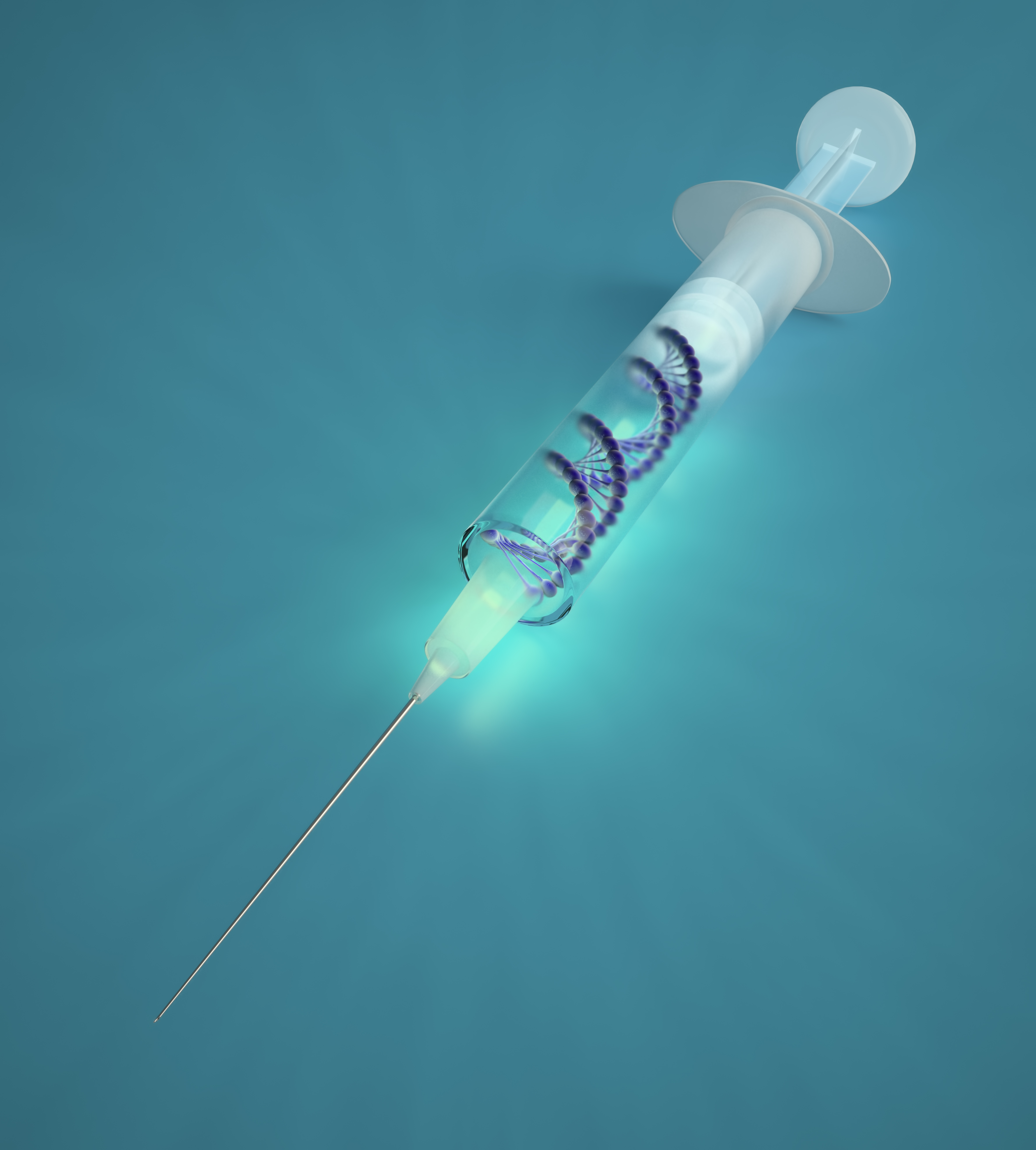
Buckle in: Gene therapy AMT-130 appears to slow down signs of Huntington’s disease in Phase I/II clinical trial
More good news for the HD community from uniQure, whose one-and-done gene therapy appears safe and shows hints of slowing down signs and symptoms of the disease

New data from uniQure, who developed a one-and-done gene therapy for Huntington’s disease (HD) called AMT-130, indicates that the drug is relatively safe and might be able to slow down signs and symptoms of HD. AMT-130 is currently under investigation in Phase I/II clinical trials in Europe and the US which are mainly focused on drug safety. These hot new data are very encouraging, so let’s dive into what it all means!
What is AMT-130?
Developed by uniQure, AMT-130 is the first gene therapy for HD. Like many of the other therapies being tested in the clinic right now, it aims to reduce the levels of the HD protein, huntingtin, in the brain. What makes it a bit different, however, is that AMT-130 is a one-and-done gene therapy; you are only given one dose of the drug ever in the course of your life.

AMT-130 is made up of a harmless virus packaged with genetic material that contains the instructions to reduce the amount of huntingtin in each cell that the virus infects in the brain. The drug is given to people with HD by a very specialised type of brain surgery.
All of this was obviously rather daunting back when AMT-130 was first developed and we didn’t know how safe the drug might be. The one-and-done nature of the drug means that effects of the drug, good or bad, can not be undone.
uniQure did a huge number of studies before they tested AMT-130 in people, which took place over years using many different types of HD animal models. Even when uniQure began testing AMT-130 in people in 2019, they did so very slowly, starting with just a few brave folks who selflessly signed up to test this innovative therapy. Only when things looked ok following these first surgeries did they begin giving the drug to more people.
HD-GeneTRX-1 and HD-GeneTRX-2 – two trials for AMT-130 on two continents
There are in fact two clinical trials testing AMT-130 in people with HD; HD-GeneTRX-1 in the US and HD-GeneTRX-2 in Europe. Together, 39 participants of the trials were given either a high dose of AMT-130, a low dose of AMT-130, or a sham surgery, which means that participants underwent surgery but no drug was given. All people in the trial are then tracked for 4 years after their surgery, where all sorts of clinical, biomarker, brain imaging, and other measurements are taken.
The key aim of both trials is to investigate whether AMT-130 is safe in people. In addition to this, lots of other data are collected along the way which might hint at how well AMT-130 is working and how it might impact signs and symptoms of HD.
Since the trials began, AMT-130 has had a bit of a bumpy road. In the first people treated, everything seemed to be going ok but in August 2022, serious side effects were reported for some people who received the high dose of AMT-130. Fortunately, things got back on track after a 3 month pause in enrollment into the trial, and uniQure shared the good news that their trial will continue as planned, with new safety measures in place.
Since the brief trial pause, uniQure has reported steady progress with signs that this drug appears safe. There were also some hints of trends in the data they collected from all of the study participants that seemed to suggest that the drug might be having an effect on some symptoms of HD, although this was just a signal and is not conclusive.
Some things to keep in mind with this latest update
It’s important to note that the two trials are not over, the most recent data is an interim update. There are still 2+ more years of data to be collected for most folks. In fact, only 12 people who received the low dose (out of 13 in this group) and 9 people who received the high dose (out of 20 in this group) are at the 24 month mark.
Given the arduous way this drug is delivered, it takes a long time for everyone to get their surgery, even after they are enrolled. This means that the numbers of people from which the data comes from in this release are very tiny, so we should be very cautious in how we interpret the findings – we don’t yet know how this will play out in a bigger pool of people over a longer period of time.
Another important thing to note is that all comparisons in this data release are against natural history data, not placebo controls. Natural history data tracks people with HD over the course of their lives to see how their symptoms, brain imaging, biomarkers, and other clinical measurements change over time. This is very different to a placebo group who undergo the same procedures as the folks receiving the drugs, the only difference being they don’t actually receive the drug. The placebo effect can be very powerful so if we are using natural history data as our baseline, we should be cautious in the direct comparisons we draw. This decision was taken as there is only complete data for people in the sham surgery group up until 12 months.

Keeping all that in mind, this update is still rather exciting, so buckle in!
What’s the latest news about AMT-130?
Safety
The good news is that AMT-130, at both the low and high dose, appears to be relatively safe. There are manageable effects which we would expect to see following brain surgery, like headaches and pain associated with the procedure. However, the important part is that no new serious side effects were reported since the trial was paused back in August 2022, which is good news.
NfL – insights to brain health
An important measurement for tracking general brain health is the biomarker neurofilament light, often called NfL. Because HD has a detrimental effect on brain health, NfL levels go up over time as HD progresses. Therefore, NfL measurements can tell us two things: Firstly, whether the therapy might be causing harm, and secondly, whether the therapy might be slowing down disease progression, and therefore slowing the rate at which NfL levels go up over time in someone with HD.
We learned in previous updates from uniQure that there’s an initial spike in NfL levels. This is to be expected for any treatment requiring brain surgery, since the surgery itself will temporarily reduce overall brain health. What’s important is that this is short-lived – the initial spike is followed by a rapid decline in NfL levels over the next 6-8 months after surgery. Looking at NfL levels after the initial spike is where the juicy details are – this is what will tell us if AMT-130 is improving brain health and slowing HD progression.
In the last data release in December of 2023, only 6 people in the low-dose group and 2 people in the high-dose group had made it to the 24 month time point. Now, there are 12 people from the low-dose group and 9 people from the high-dose group that have reached the 24 month mark. Having data from more people helps give us a clearer picture of the effect AMT-130 is having on NfL 2 years after treatment.
Excitingly, the new data show that people treated with both the low- and high-dose of AMT-130 have NfL levels significantly below what would be expected, suggesting their decline in brain health is slowed compared to folks who have not been treated with AMT-130. While this sounds incredibly exciting, this is still a very small dataset so we shouldn’t get our hopes up too high.
Clinical measures
uniQure also looked at clinical measures to get an idea of the effect that AMT-130 might have on slowing or stopping symptoms of HD. Specifically, they looked at the Composite Unified Huntington’s Disease Rating Scale, or cUHDRS. This is a collection of tests that measures the ability of someone with HD to carry out daily tasks, movement control, capacity to pay attention, and memory. Overall, the cUHDRS is known to be the most sensitive way to measure clinical progression of HD.
At the end of the day, clinical measures will be the most important readout. Having a drug that is effective at slowing or stopping progression of clinical signs and symptoms of HD is what we all want. Compared to a natural history study, disease progression was slowed by around 80% in people on the high dose of AMT-130. This suggests that AMT-130 may be having an effect in slowing progression of HD as measured by cUHDRS. Again, this is only data from 9 people, so it must be interpreted with caution.

cUHDRS is actually made up of many different clinical measures including Total Function Capacity (TFC) and Total Motor Score (TMS). Looking at these individual measures, the effect of AMT-130 is less obvious although there is a suggestion of a trend of things heading in the direction of slowing HD symptom progression. Not to be a broken record, but again, the tiny number of folks whose data is being analysed at this stage means we have to be careful in drawing too strong conclusions.
Other measures uniQure didn’t report this time
Interestingly, this update included no new information about whether huntingtin protein levels are being lowered by the drug, the effect we expect this drug to have in the brain. We also didn’t learn any new information about what brain imaging might tell us about how AMT-130 is working. Hopefully, uniQure gives us updates on both of these measures the next time they share data.
What does this all mean?
Overall, this update is exciting, positive and certainly cause for very cautious optimism. That said, this does not mean that AMT-130 is a cure for HD, there is still a long road ahead. We need more data from more people over longer timeframes to be sure of the effect this drug is really having on slowing down symptoms of HD. Nonetheless, the fact that the drug appears relatively safe and there are positive signs in how it might be helping slow down symptoms is good news for the HD community.
What’s next for AMT-130?
Recently, the FDA granted AMT-130 Regenerative Medicine Advanced Therapy (RMAT) designation – the very first time this has happened for an HD therapeutic. This gives them more frequent interactions with the FDA and priority review of their data, so that if the time comes that they’re ready to file for regulatory approval, they can hit the ground running to get accelerated approval.
uniQure have disclosed that they expect to meet with the FDA in the second half of 2024 to continue their discussions about the development of AMT-130. In those conversations, they hope to define a path for getting approval of AMT-130 for HD.
Lot’s of things to be thankful for
Sometimes when it rains, it pours! We have had what feels like a deluge of positive and encouraging news about HD clinical trials lately, and certainly at HDBuzz, we are feeling thankful. It was not so long ago that the news deluge was delivering a very different and much more difficult message, that many drugs just weren’t working as we had hoped.
So, what’s changed? Well it’s important to remember that even when clinical trials don’t give us the results we had hoped for, there is still so much to be learnt from the wealth of data that is collected. All of the selfless hours in the clinic from the folks with HD who sign up for these trials count for a huge amount. The rich datasets they help generate have a huge impact in how scientists understand how different therapies might work in people, and what they can change and improve to give us the best chance of success. Their contributions have gotten us to this exciting point where we still have lots of irons in the fire and are edging closer to disease-modifying therapies.
The future of HD clinical trials is bright, thanks to the resiliency, fortitude, and sacrifice of so many people with HD who bravely stepped up to test these experimental drugs. We are forever thankful to them and are buckled in for the ride to see what comes next.
Learn more
For more information about our disclosure policy see our FAQ…


